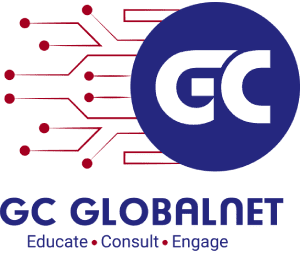Twitter Feed
Quantum Computing Delivered From The Cloud
Photo credit: Shutterstock IBM Cloud is now providing developers with the infrastructure and portal to a 5 qubit quantum computer. This equips them with the ability to build interfaces between…
Connections Redefining the Enterprise Network
Photo credit: Shutterstock The computer and the network that connects them are both inextricably linked to the success of any business. This truth is at the heart of our contemporary…
Business Chatbots Taking Over
Chat apps characteristics make them very appealing to businesses and marketers. Prominent ones include their size, user retention, usage rates, and user demographics. In fact, the combined user base of…
NCTA CloudMASTER®: The Path To Your Future
In 2016, cloud computing started to dominate many IT market segments. As a business, Synergy Research Group reported that industry revenue for the four quarters ended Sept. 30 grew 25%.…
Cybersecurity in the President Trump Administration
From the rise of increasingly capable nation-states—like Iran and North Korea—conducting destructive attacks against American private sector companies, to the continuing pace of IP theft by China striking at the…
Creating Your Digital Strategy
Photo credit: Shutterstock For many corporations, welcoming the New Year also heralds the season of strategy development and budget distribution. This year, however, companies of all sizes are struggling with…
CloudMASTER® Pays Well In The US Great Northwest
The City of Beaverton is located seven miles west of Portland, Oregon, in the Tualatin River Valley, It encompasses 19.6 square miles, and is home to more than 95,000 residents.…
NATO ACT “Art of the Possible” Interoperability Demonstration
GovCloud Network is proud to have served as the Program Manager for the NATO Allied Command Transformation, “Art of the Possible” Interoperability Demonstration on December 16, 2016. supporting the The…
Olisipo Can Make You A CloudMASTER®
Olisipo Learning in Portugal has a culture that is based on the constant search for new challenges. Recognized by their clients as the “Best HR Supplier”, they have placed more…
What is Your 2017 Business Strategy?
Photo credit: Shutterstock End of year predictions in December are as predictable as tomorrow’s sunrise, but a recent video on 2017 Technology Trends helped me really understand how important a…
Workplace expectations are changing, and along with them, the devices we use to do our jobs. In this episode of “The End Point Imperative”, Intel’s Sarah Wieskus tells us about how Intel is driving better user interface and performance while continuing to driving enhanced security and manageability.
Another example is when we talk about having web meetings at home. Instantly with a push of a button on my phone, on my devices at home, I can connect to my friends and family very easily, see them, talk to them, with pretty good quality, but when I go to work to have a web meeting it’s very complex, it’s not easy to connect and you sacrifice on quality. Why is that?
( This content is being syndicated through multiple channels. The opinions expressed are solely those of the author and do not represent the views of GovCloud Network, GovCloud Network Partners or any other corporation or organization.)
( Thank you. If you enjoyed this article, get free updates by email or RSS – © Copyright Kevin L. Jackson 2016)
Cloud Computing
- CPUcoin Expands CPU/GPU Power Sharing with Cudo Ventures Enterprise Network Partnership
- CPUcoin Expands CPU/GPU Power Sharing with Cudo Ventures Enterprise Network Partnership
- Route1 Announces Q2 2019 Financial Results
- CPUcoin Expands CPU/GPU Power Sharing with Cudo Ventures Enterprise Network Partnership
- ChannelAdvisor to Present at the D.A. Davidson 18th Annual Technology Conference
Cybersecurity
- Route1 Announces Q2 2019 Financial Results
- FIRST US BANCSHARES, INC. DECLARES CASH DIVIDEND
- Business Continuity Management Planning Solution Market is Expected to Grow ~ US$ 1.6 Bn by the end of 2029 - PMR
- Atos delivers Quantum-Learning-as-a-Service to Xofia to enable artificial intelligence solutions
- New Ares IoT Botnet discovered on Android OS based Set-Top Boxes

